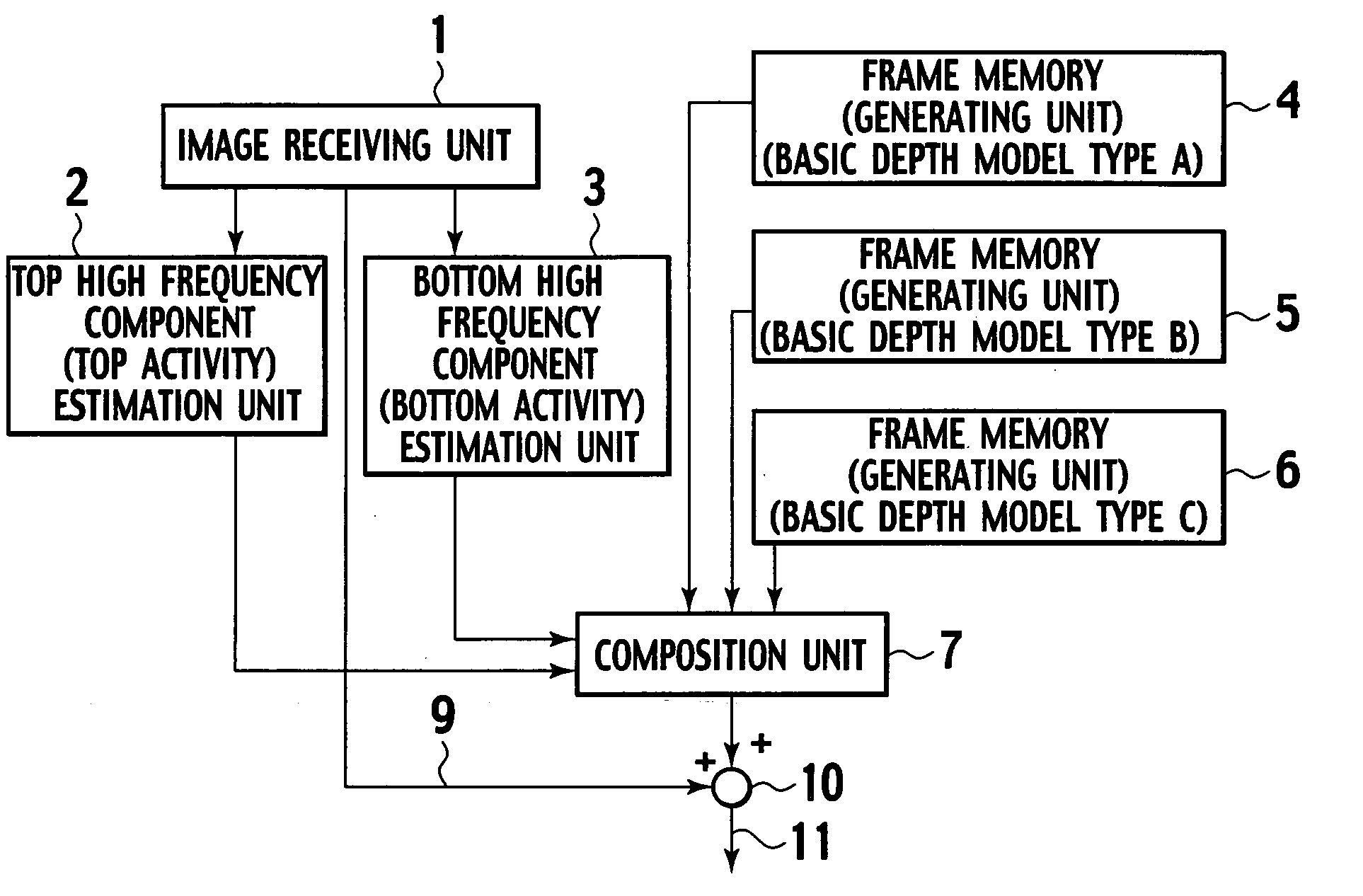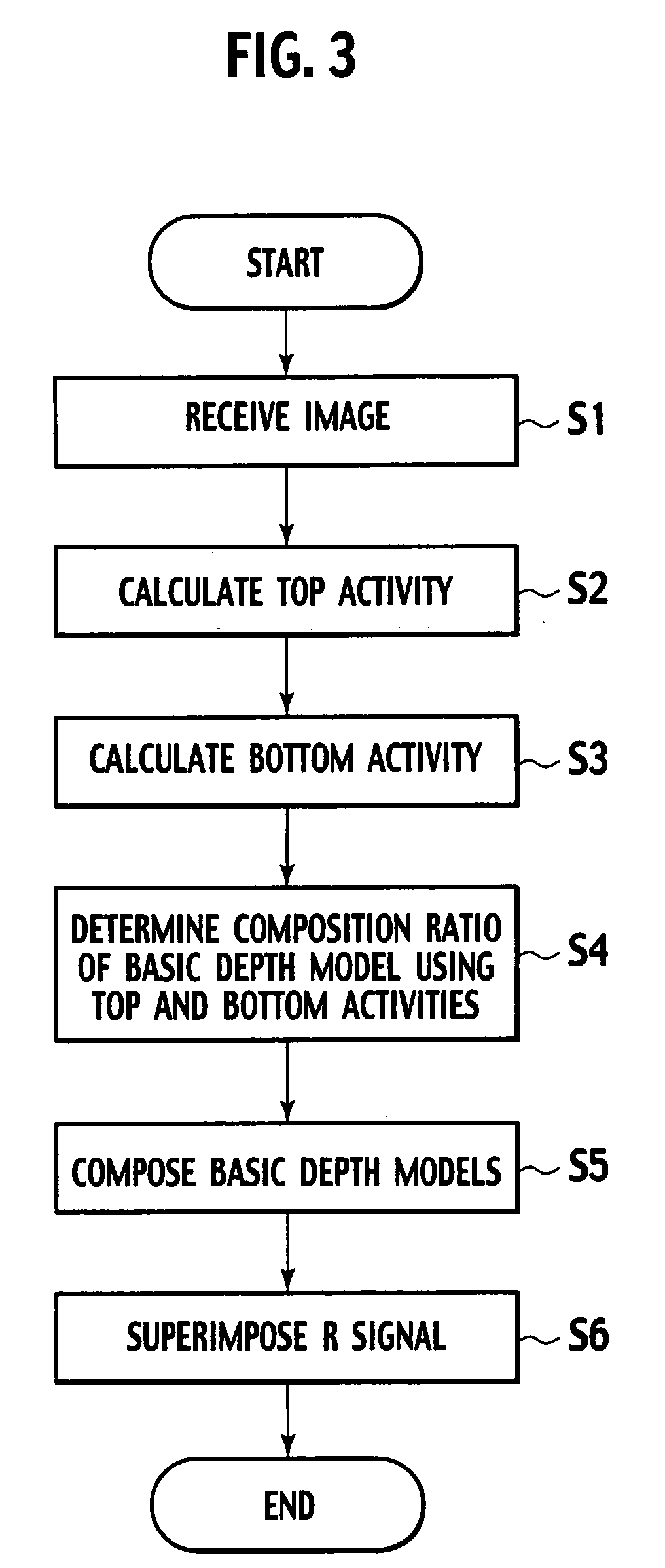Pseudo 3D image creation device, pseudo 3D image creation method, and pseudo 3D image display system
a 3d image and creation method technology, applied in the field of pseudo 3d image creation methods, and pseudo 3d image display systems, can solve the problems of difficult automatic estimation of reliable depth without editing, difficult automatic determination, and difficult automatic composition of correct depth structure models for making images
- Summary
- Abstract
- Description
- Claims
- Application Information
AI Technical Summary
Benefits of technology
Problems solved by technology
Method used
Image
Examples
Embodiment Construction
[0044] An embodiment according to the present invention will be described below with reference to the drawings. FIG. 1 is a block diagram showing one embodiment of a pseudo 3D image creation device according to the present invention. FIG. 2 is a block diagram showing one embodiment of a composition unit shown in FIG. 1. FIG. 3 is a flowchart showing one embodiment of a pseudo 3D image creation method according to the present invention.
[0045] Referring to FIG. 1, the pseudo 3D image creation device in this embodiment comprises an image receiving unit 1 that receives a non-3D image to be converted to a pseudo 3D image; a top high frequency component estimation unit 2 that calculates “a high region component estimation value of about top 20% part (top high frequency component estimation value or top activity)” of a non-3D image received from the image receiving unit 1; a bottom high frequency component estimation unit 3 that calculates “a high region component estimation value of abou...
PUM
 Login to View More
Login to View More Abstract
Description
Claims
Application Information
 Login to View More
Login to View More - R&D
- Intellectual Property
- Life Sciences
- Materials
- Tech Scout
- Unparalleled Data Quality
- Higher Quality Content
- 60% Fewer Hallucinations
Browse by: Latest US Patents, China's latest patents, Technical Efficacy Thesaurus, Application Domain, Technology Topic, Popular Technical Reports.
© 2025 PatSnap. All rights reserved.Legal|Privacy policy|Modern Slavery Act Transparency Statement|Sitemap|About US| Contact US: help@patsnap.com



